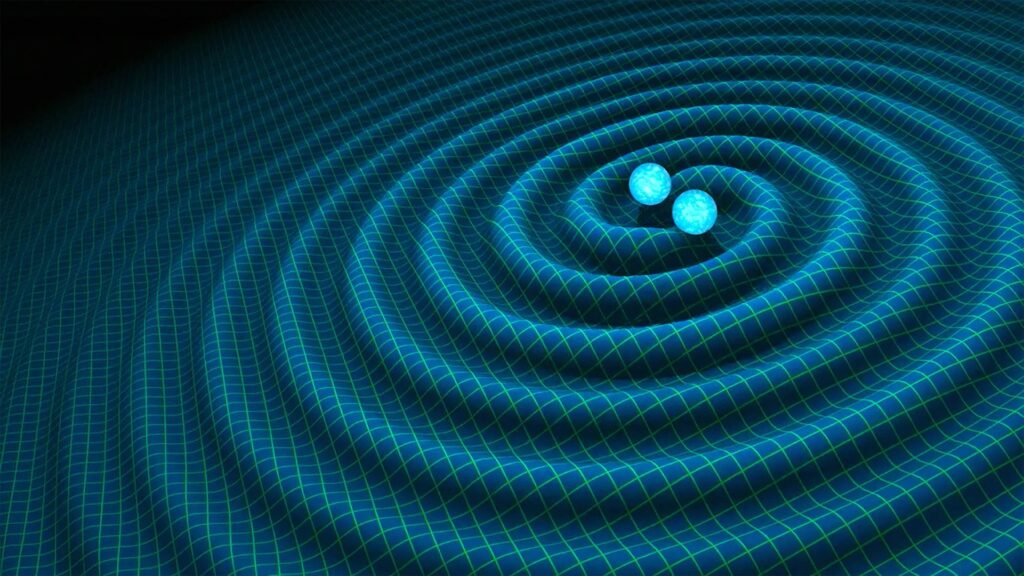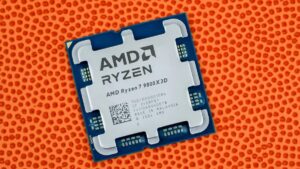
September 2025 marks a significant milestone in the field of astrophysics: the tenth anniversary of the first direct detection of gravitational waves, a phenomenon predicted by Albert Einstein in his 1916 theory of General Relativity. These elusive ripples in the fabric of space-time were first observed by the Laser Interferometer Gravitational-Wave Observatory (LIGO), revolutionizing our understanding of the universe.
Gravitational waves travel at the speed of light, approximately 186,000 miles per second, and as they pass through space, they stretch and squeeze the distances between objects. This groundbreaking discovery has opened a new window into the cosmos, allowing scientists to observe celestial events that were previously undetectable.
Waves in Space
Gravitational waves are generated when massive objects in space accelerate, particularly during violent cosmic events. LIGO’s first detection involved the merger of two black holes, an event that sent ripples across the universe. However, black holes are not the sole creators of these waves. Supernovae and neutron stars can also produce gravitational waves under certain conditions.
While these waves remain invisible to the human eye, NASA’s Science Visualization Studio has created animations to illustrate the dramatic merger of black holes and the resulting gravitational waves. These visualizations provide a glimpse into the dynamic processes that shape our universe.
How LIGO Works
The LIGO observatories, located in Washington State and Louisiana, are engineering marvels designed to detect these faint signals. Each observatory consists of two tunnels, each approximately 2.5 miles long, arranged in an “L” shape. At the end of each tunnel, a precisely polished mirror reflects a laser beam sent from the observatory.
The laser beam is split into two, with each part traveling down a tunnel and bouncing off the mirrors. Upon returning, the beams are recombined. If the paths are perfectly equal, the light waves cancel each other out, resulting in darkness at the detector. However, if a gravitational wave passes, it slightly alters the tunnel lengths, causing a flicker of light that signals the wave’s presence.
For the detection to be confirmed, both LIGO observatories must record the same interference pattern within milliseconds. This dual confirmation ensures that the signal is genuine and not a result of local noise, providing a reliable method for detecting gravitational waves.
Get Involved
In the past decade, LIGO, along with other observatories such as VIRGO and KAGRA, has detected 300 black hole mergers. Some of these detections have been confirmed, while others await further analysis. The collaboration between these observatories has significantly expanded our understanding of the universe.
While most people do not have access to a laser interferometer, there are ways for the public to contribute to gravitational wave research. Two notable projects are “Black Hole Hunters” and “Gravity Spy.”
Black Hole Hunters
This project involves analyzing data from the TESS satellite to study changes in star brightness over time. Participants look for gravitational microlensing effects, which may indicate the presence of a massive object, such as a black hole, passing in front of a star.
Gravity Spy
In this initiative, volunteers help LIGO scientists identify glitches that mimic gravitational waves. By distinguishing these mimics, the project aids in training algorithms to detect genuine signals, enhancing the accuracy of future detections.
For those interested in a hands-on demonstration, JPL’s “Dropping In With Gravitational Waves” activity uses everyday materials like gelatin, magnetic marbles, and a small mirror to illustrate how gravitational waves propagate through space-time.
The Future of Gravitational Wave Astronomy
As we celebrate a decade of gravitational wave discoveries, the field of gravitational wave astronomy continues to evolve. With advancements in technology and international collaboration, scientists are poised to uncover even more secrets of the universe.
The implications of these discoveries are profound, offering insights into the most extreme environments in the cosmos and challenging our understanding of physics. As research progresses, the potential for new breakthroughs remains vast, promising to deepen our comprehension of the universe and our place within it.
Looking ahead, the continued development of gravitational wave observatories and the involvement of citizen scientists will play a crucial role in expanding our knowledge of the universe. As we stand on the brink of further exploration, the journey of discovery is just beginning.







